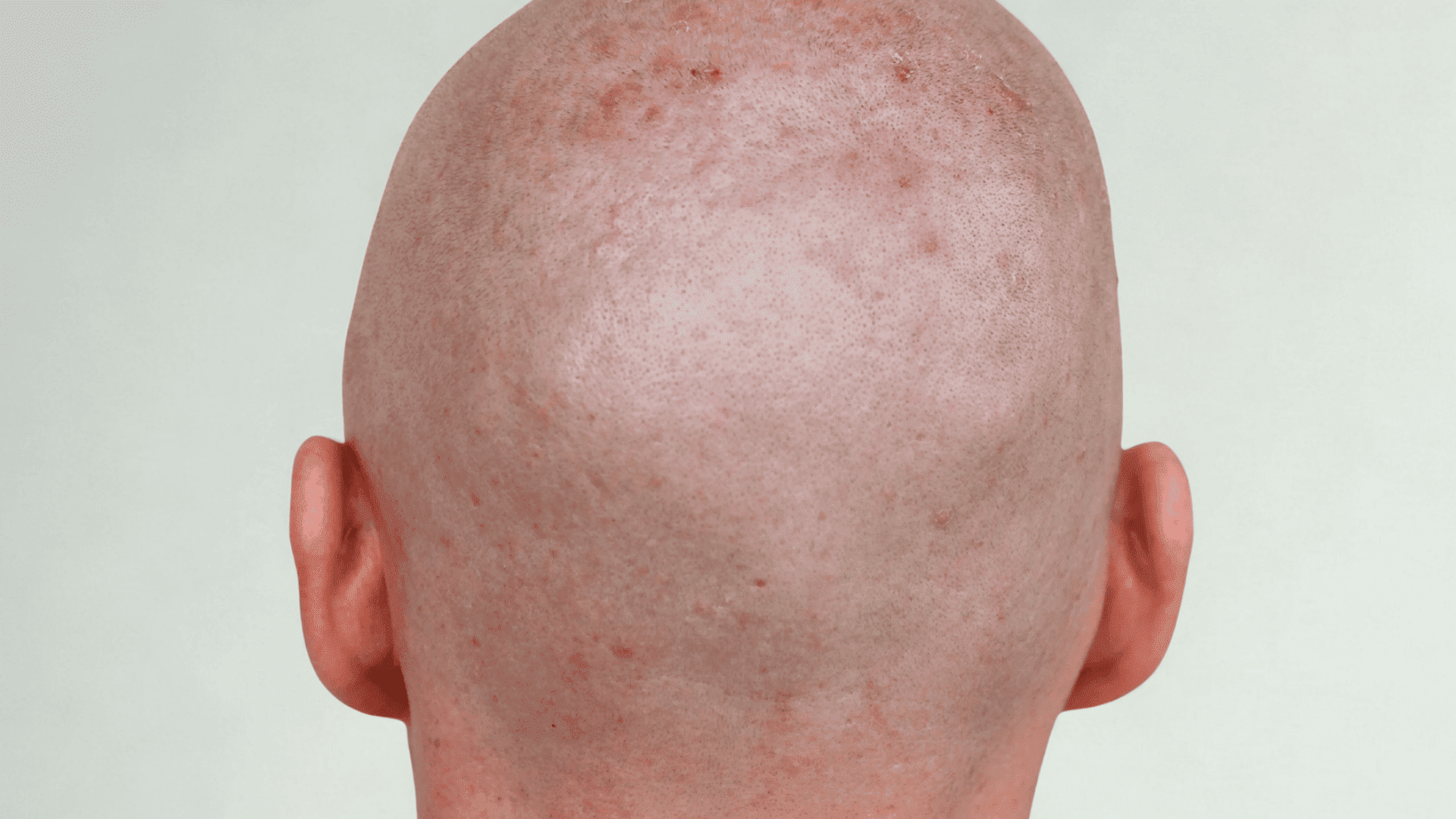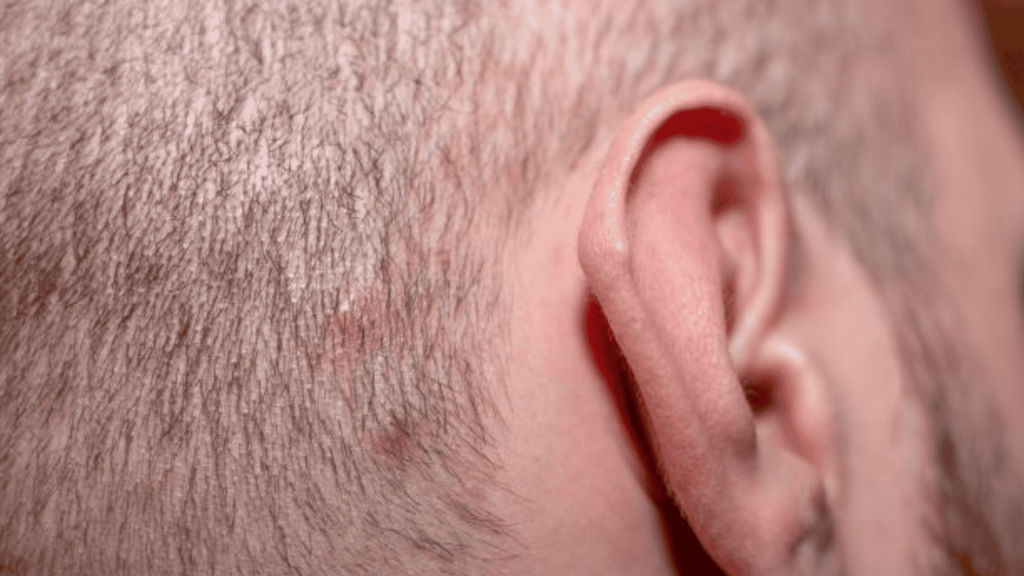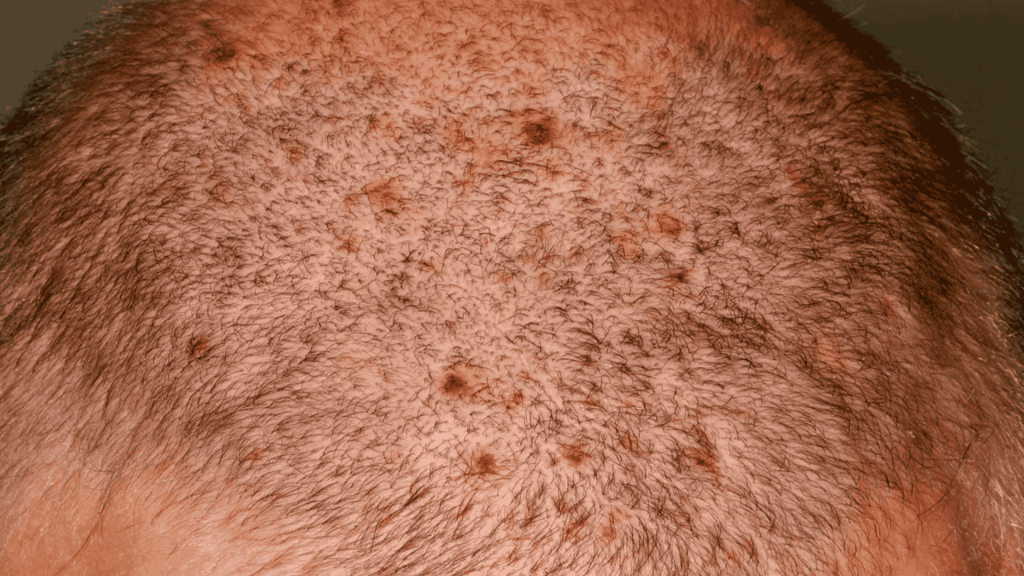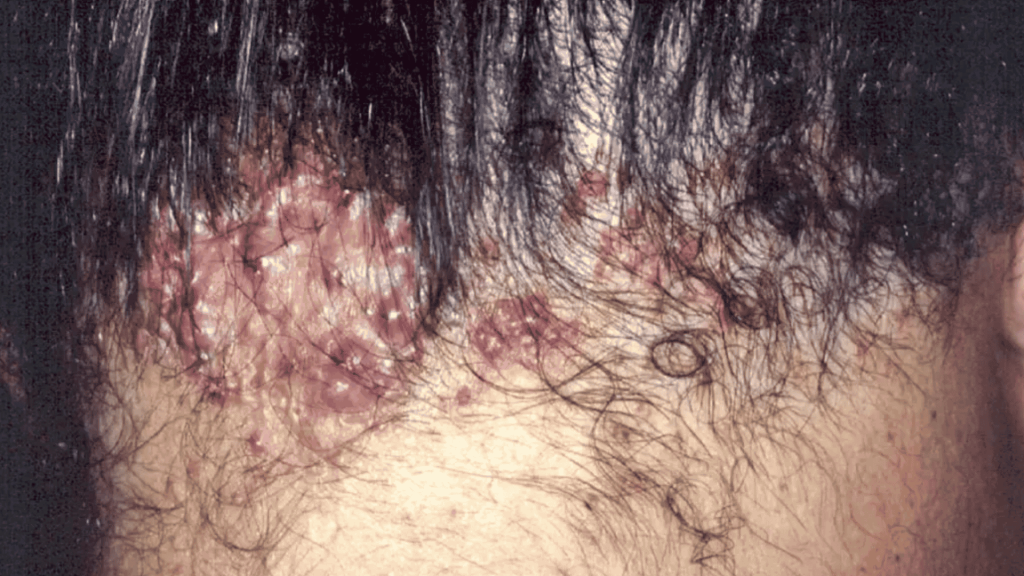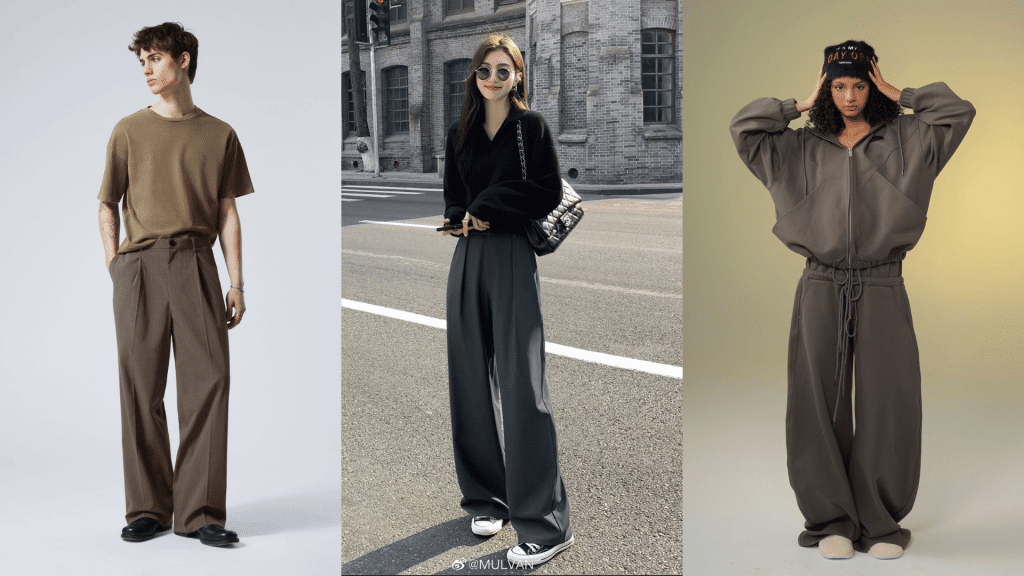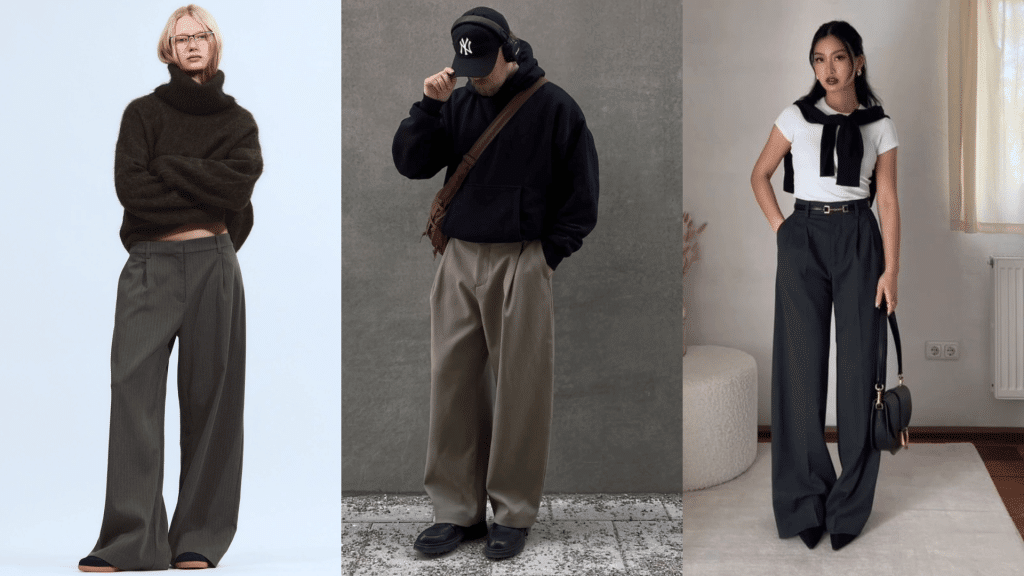Many people focus on facial acne but often overlook scalp acne and scalp pimples that can cause significant discomfort.
These bumps form when hair follicles become clogged with oil, dead skin cells, and bacteria, creating painful, itchy spots on the scalp. Unlike facial breakouts, it hides beneath hair, making it harder to notice until it becomes tender or inflamed.
The good news? Effective scalp acne treatment can clear existing and future breakouts from gentle cleansing routines to targeted treatments.
This article will walk through everything needed to identify, treat, and prevent it from disrupting daily comfort and hair health for good.
Disclaimer: Medical treatment information is for general reference only and not a substitute for professional care. Always consult a healthcare provider or dermatologist for proper diagnosis and treatment of scalp pimples.
What Are Scalp Pimples?
Understanding what scalp Acne actually is helps distinguish it from other scalp conditions. This knowledge forms the foundation for effective treatment choices.
They are inflamed bumps that form when hair follicles become blocked with excess oil, dead skin cells, and bacteria. Unlike dandruff, which causes flaky skin, these bumps feel tender and may contain pus.
Scalp bumps differ from facial acne and cause persistent itching, scratching, and potential infection that affects sleep and daily activities. Severe cases may contribute to temporary hair loss around affected areas.
Recognizing scalp pimples early allows for prompt treatment and prevents complications. The sooner action is taken, the better the outcomes tend to be.
Causes of Scalp Pimples
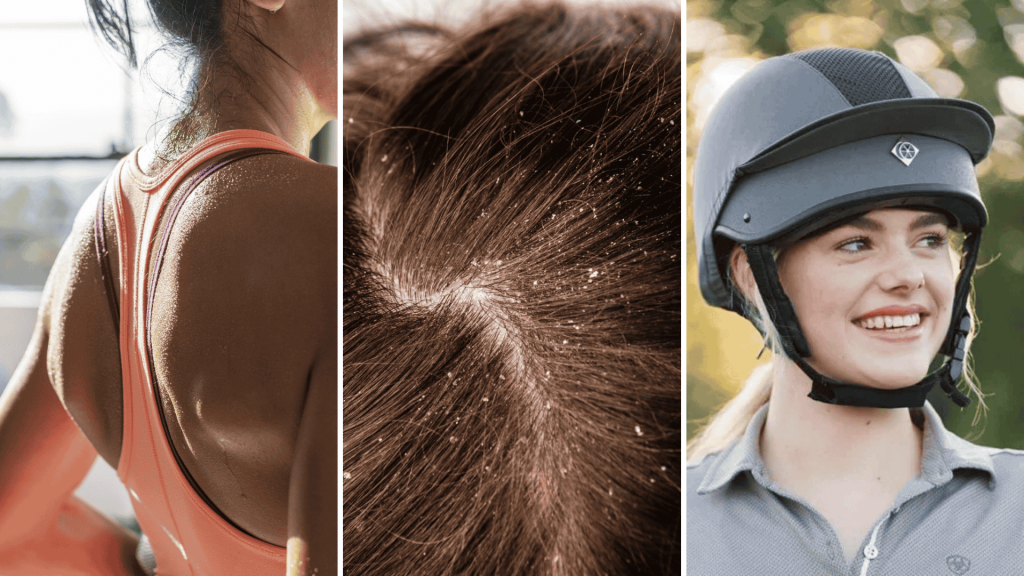
Several factors contribute to the formation of scalp acne, often working together to create the ideal conditions for breakouts. Understanding these causes helps target treatment more effectively.
- Oil and dead skin blocking pores: The scalp produces sebum to keep hair healthy. Excess oil mixes with dead skin cells, clogging hair follicles and fostering bacterial growth.
- Hair products leaving residue: Heavy styling products, conditioners, and hair masks can build up on the scalp over time. This residue mixes with natural oils and blocks pores.
- Sweat, tight caps, or helmets: Excessive sweating from exercise or wearing tight headwear traps moisture against the scalp. This warm, humid environment encourages bacterial growth, while friction from hats or helmets can irritate hair follicles.
- Germs on the scalp (bacteria or fungus): Bacteria like Propionibacterium acnes naturally live on the scalp but can overgrow in clogged follicles. Fungal infections can also trigger inflammatory responses that resemble pimples and cause similar symptoms.
- Hormones, stress, and diet: Hormonal fluctuations during puberty, menstruation, or pregnancy increase oil production. Chronic stress elevates cortisol levels, which can worsen acne. High-glycemic foods and dairy products may also trigger breakouts.
Identifying personal triggers helps create a more targeted prevention strategy. Most people find that multiple factors contribute to their scalp pimple issues.
Symptoms and Warning Signs of Scalp Pimples
Recognizing the signs of scalp pimples helps differentiate them from other scalp conditions. Early identification leads to more effective treatment outcomes.
| SYMPTOM | DESCRIPTION |
|---|---|
| Small, red bumps | Tender to the touch and may be raised. |
| White or yellow centers | Pimples may have pus-filled centers. |
| Warm feeling in the surrounding area | The skin around the pimples may feel warm or inflamed. |
| Itching or burning sensation | Commonly felt when brushing or touching the scalp. |
| Pain when touching or washing the scalp | Pain intensifies when the scalp is touched or washed. |
| Raised bumps | Pimples appear as raised bumps rather than flat, flaky patches. |
| Individual spots | Scalp pimples usually appear as individual spots rather than large patches. |
| Worsens with tight headwear or after sweating | Symptoms may become worse due to friction or perspiration. |
Knowing when to seek professional help prevents complications and ensures proper treatment for severe cases. Early intervention often leads to better outcomes.
Types of Scalp Pimples
Different severity levels require different treatment approaches. Understanding these categories helps set realistic expectations for healing time and treatment intensity.
1. Mild Breakouts
Mild cases show small, red bumps that cause slight discomfort. They usually respond to gentle cleaning and over-the-counter treatments.
These pimples don’t leave scars or cause major hair issues. With proper care, they typically heal without long-lasting effects.
2. Moderate Cases
Moderate breakouts are larger bumps, some with pus, covering bigger areas of the scalp. They often cause intense itching.
These breakouts need more focused treatment to prevent spreading and manage discomfort. Proper care can help control symptoms and prevent further irritation.
3. Severe Breakouts
Deep, painful cysts that can cause temporary hair loss represent severe cases. These often require prescription medications and professional monitoring to prevent scarring and secondary infections that could lead to permanent damage.
Each type responds differently to treatment, so matching the approach to intensity improves success rates. Professional guidance becomes increasingly important as harshness increases.
Home Remedies and Natural Treatments
Simple, natural approaches can effectively manage mild to moderate scalp pimples. These methods work well alone or alongside other treatments to support scalp health.
1. Tea Tree Oil Treatment
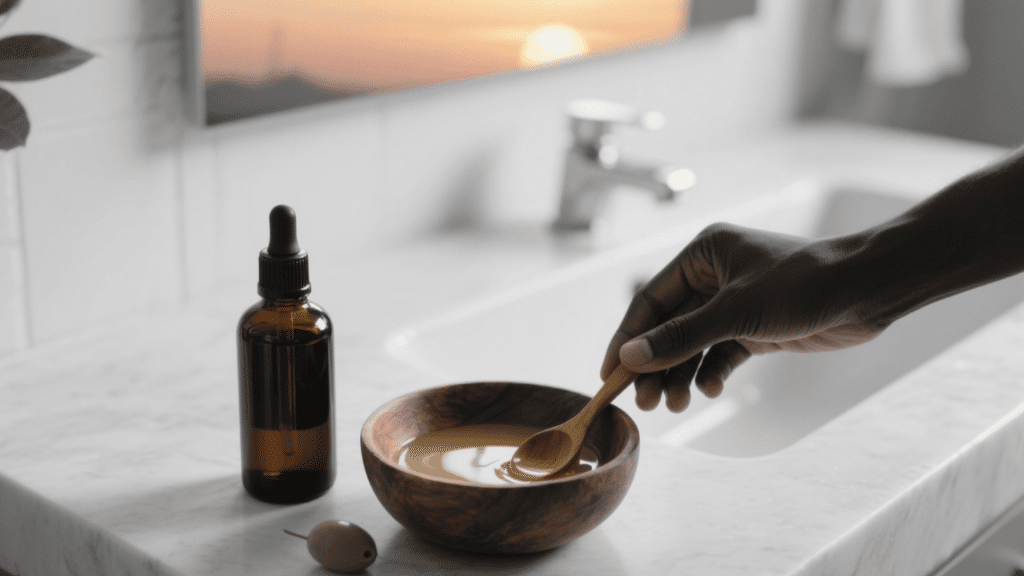
Mix 2-3 drops of tea tree oil with 1 tablespoon of carrier oil like coconut or jojoba oil. Apply the mixture to clean fingertips and gently massage into affected scalp areas.
Let the treatment sit for 15-20 minutes before rinsing with lukewarm water. Always patch test on a small skin area first to check for sensitivity reactions.
- How It Works: Tea tree oil contains natural antibacterial properties that fight acne-causing bacteria on the scalp
- Application Method: Dilute with carrier oil and massage gently into affected areas before rinsing
- Benefits: Reduces inflammation, kills bacteria, and soothes an irritated scalp without harsh chemicals
- How Often: Apply 2-3 times per week for best results without over-drying the scalp
2. Apple Cider Vinegar Rinse
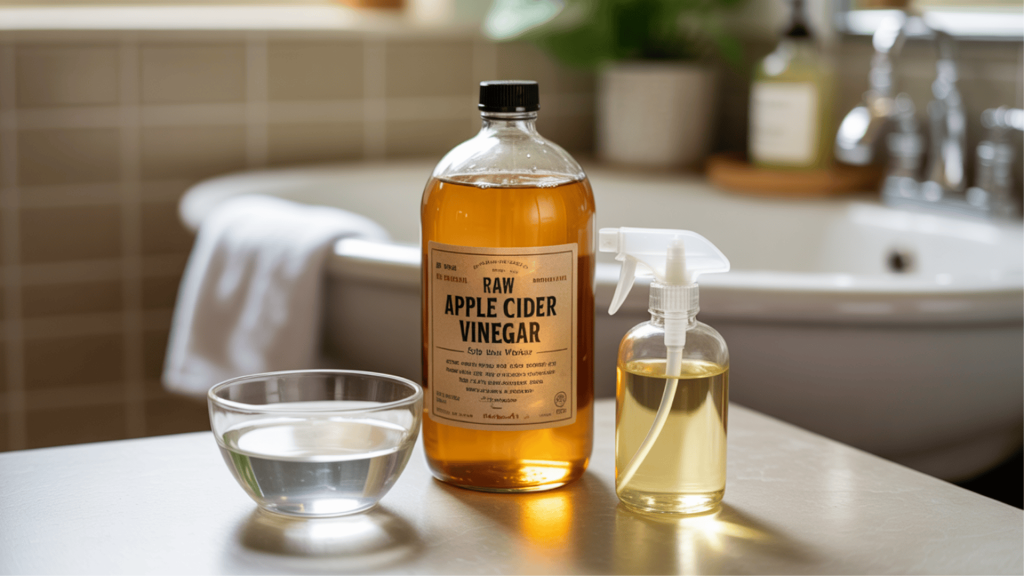
Dilute 1 part raw apple cider vinegar with 3 parts water in a spray bottle. After shampooing, spray the mixture evenly across the scalp and let it sit for 5 minutes.
Massage gently with fingertips to ensure even distribution. Rinse thoroughly with cool water to remove any residual smell.
- How It Works: Apple cider vinegar helps balance the scalp’s pH level and creates an environment where harmful bacteria cannot survive
- Application Method: Mix with water in a spray bottle and apply after shampooing for 5 minutes
- Benefits: Balances scalp pH, reduces bacterial growth, and removes product buildup effectively
- How Often: Use 1-2 times per week as part of a regular hair washing routine
3. Aloe Vera Gel Application
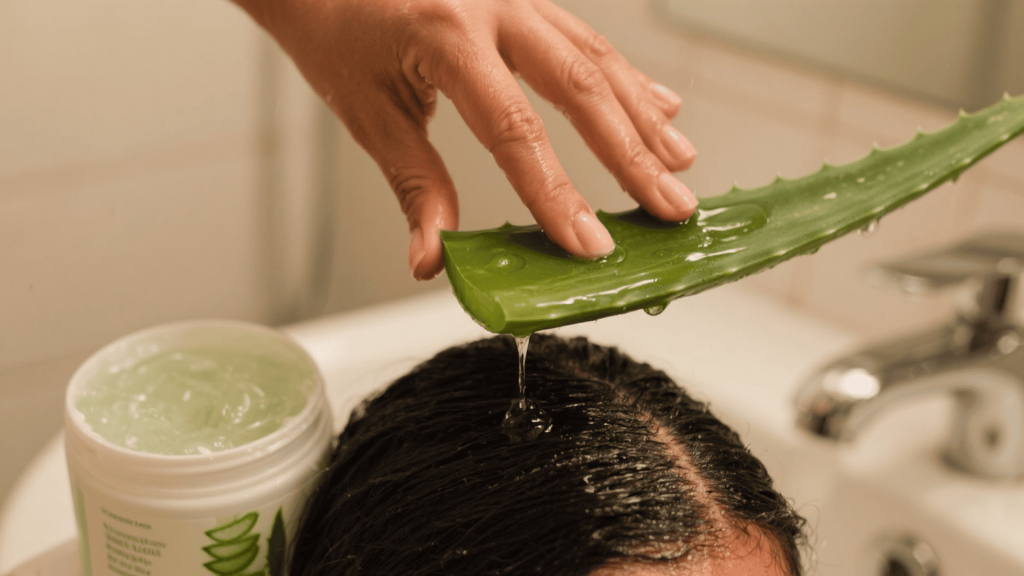
Extract fresh gel from an aloe vera leaf or use pure, organic aloe vera gel. Apply a thin layer directly to a clean, damp scalp using gentle circular motions.
Focus on areas with visible pimples or irritation. Leave the gel on for 20-30 minutes before rinsing with lukewarm water.
- How It Works: Aloe vera contains anti-inflammatory compounds that soothe irritated skin and promote healing
- Application Method: Apply fresh gel directly to affected areas and leave for 20-30 minutes
- Benefits: Soothes inflammation, promotes healing, and provides natural moisture without clogging pores
- How Often: Apply daily until symptoms improve, then reduce to 2-3 times weekly
4. Witch Hazel Toner
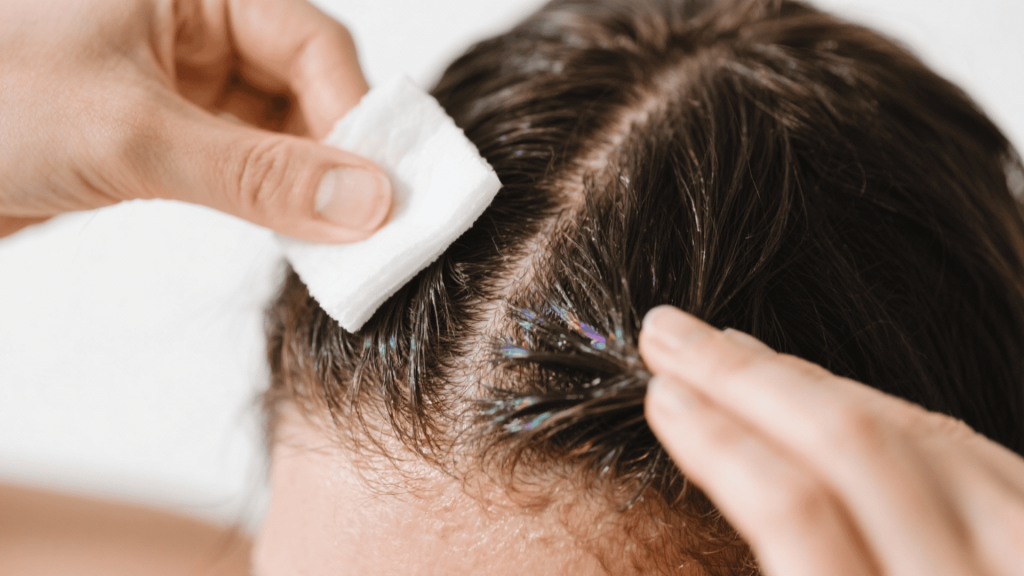
Soak a cotton pad with alcohol-free witch hazel and gently dab onto affected scalp areas. Use parting techniques to access the scalp through hair sections.
Allow the witch hazel to air dry completely without rinsing. Follow up with a light, non-comedogenic scalp moisturizer if needed.
- How It Works: Witch hazel acts as a natural astringent that tightens pores and reduces oil production
- Application Method: Apply with a cotton pad to affected areas and let air dry completely
- Benefits: Tightens pores, reduces excess oil, and provides gentle antiseptic properties
- How Often: Use once daily, preferably in the evening after cleansing the scalp
5. Honey and Cinnamon Mask
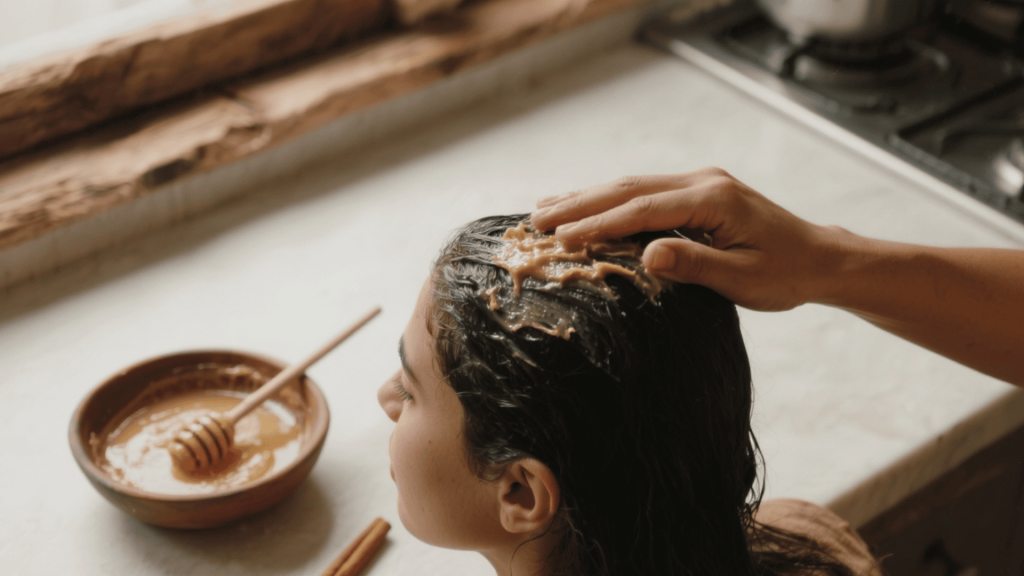
Mix 2 tablespoons of raw honey with 1 teaspoon of ground cinnamon to create a thick paste. Apply the mixture to affected scalp areas using clean fingers or a brush.
Leave the mask on for 10-15 minutes, allowing the ingredients to work. Rinse thoroughly with warm water and follow with gentle shampoo if needed.
- How It Works: Honey provides antibacterial properties while cinnamon improves blood circulation to promote healing
- Application Method: Apply thick paste to affected areas and leave for 10-15 minutes before rinsing
- Benefits: Fights bacteria naturally, improves circulation, and provides gentle exfoliation
- How Often: Apply 1-2 times per week for optimal results without irritation
6. Oatmeal Scalp Scrub
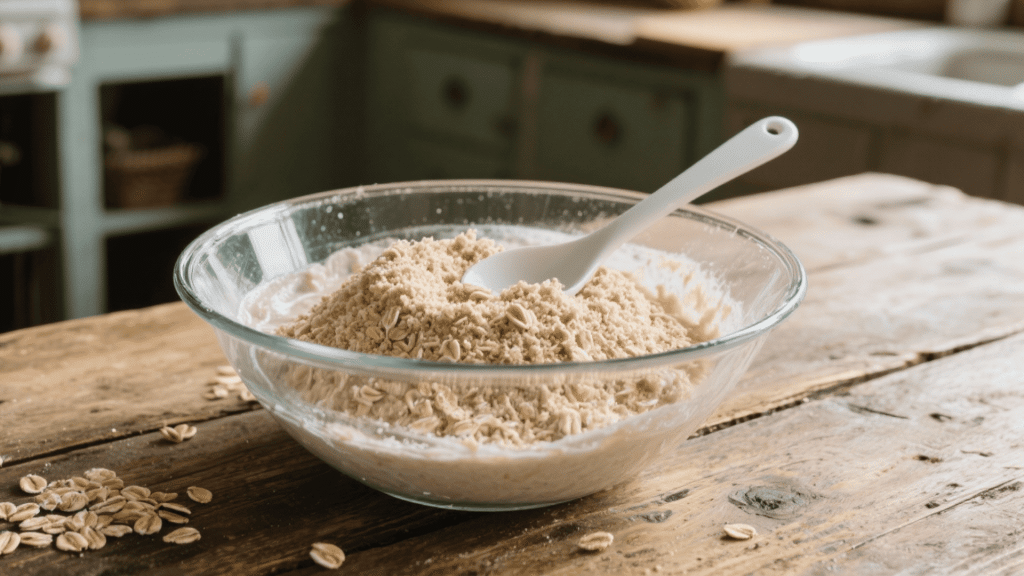
Grind 1/4 cup of plain oats into a fine powder using a blender or food processor. Mix the oat powder with enough water to form a paste-like consistency.
Gently massage the mixture into the damp scalp using circular motions for 2-3 minutes. Rinse thoroughly with lukewarm water and follow with regular shampoo.
- How It Works: Oatmeal provides gentle exfoliation that removes dead skin cells without harsh abrasives
- Application Method: Massage oat paste into a damp scalp with circular motions for 2-3 minutes
- Benefits: Removes dead skin cells, unclogs pores, and soothes inflamed skin naturally
- How Often: Use 1-2 times per week to avoid over-exfoliating sensitive scalp skin
7. Green Tea Rinse
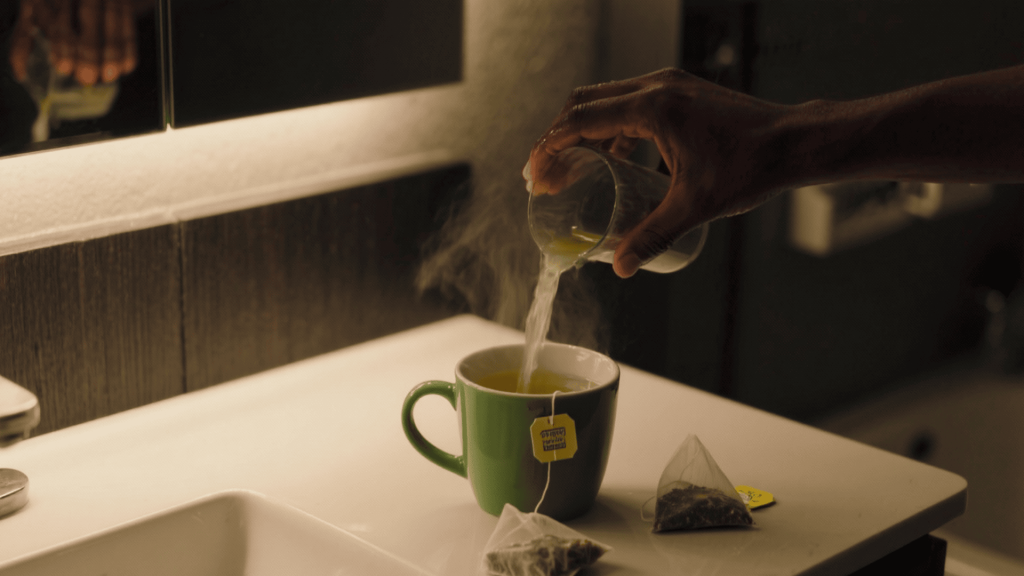
Brew 2 green tea bags in 2 cups of hot water for 10 minutes, then let cool completely. After shampooing, pour the cooled green tea over the scalp and massage gently.
Allow the tea to sit for 5-10 minutes before rinsing with cool water. Store leftover tea in the refrigerator for up to 3 days.
- How It Works: Green tea contains antioxidants and anti-inflammatory compounds that reduce scalp irritation
- Application Method: Pour cooled green tea over scalp after shampooing and let sit 5-10 minutes
- Benefits: Reduces inflammation, provides antioxidants, and helps balance scalp oil production
- How Often: Use 2-3 times per week as a final rinse after regular shampooing
8. Baking Soda Paste
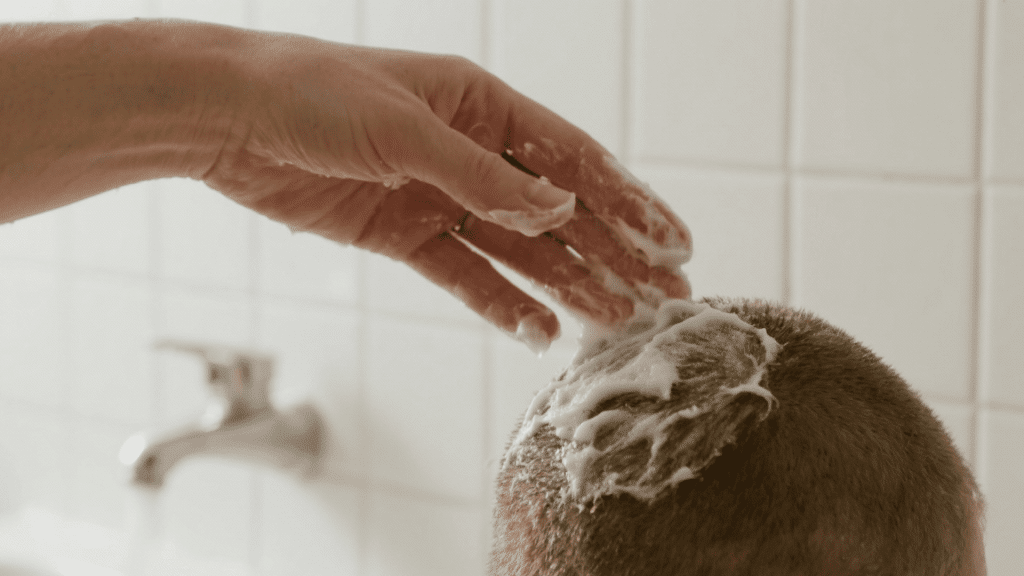
Mix 2 tablespoons of baking soda with enough water to create a smooth paste. Apply the paste to affected scalp areas using gentle patting motions.
Let the treatment sit for 5-10 minutes, avoiding longer contact times that might cause irritation. Rinse thoroughly with lukewarm water and follow with conditioner on hair lengths only.
- How It Works: Baking soda helps balance pH levels and provides mild exfoliation to unclog pores
- Application Method: Apply paste to affected areas and leave for 5-10 minutes before rinsing
- Benefits: Balances pH, provides gentle exfoliation, and helps remove excess oil buildup
- How Often: Use once weekly to avoid disrupting the scalp’s natural pH balance
9. Lemon Juice Treatment
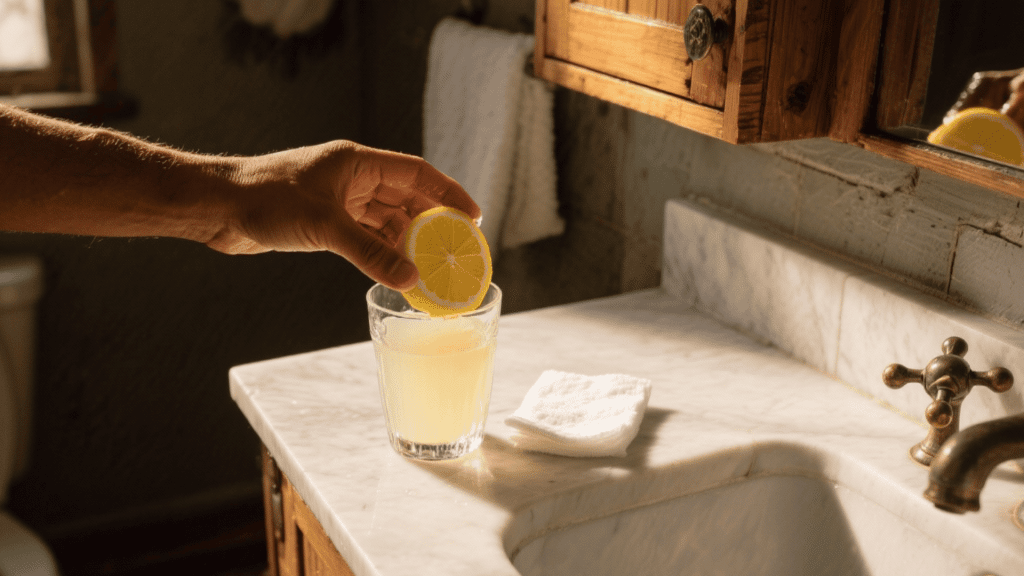
Dilute fresh lemon juice with equal parts water to reduce acidity. Apply the mixture to affected scalp areas using a cotton pad or spray bottle.
Massage gently and let sit for 10-15 minutes before rinsing thoroughly. Always apply sunscreen if going outdoors after treatment, as lemon can increase sun sensitivity.
- How It Works: Lemon juice contains citric acid that helps remove dead skin cells and excess oil
- Application Method: Apply diluted lemon juice with a cotton pad and leave for 10-15 minutes
- Benefits: Removes dead skin cells, reduces oil buildup, and provides natural antibacterial properties
- How Often: Use 1-2 times per week, avoiding sun exposure immediately after application
10. Coconut Oil Massage
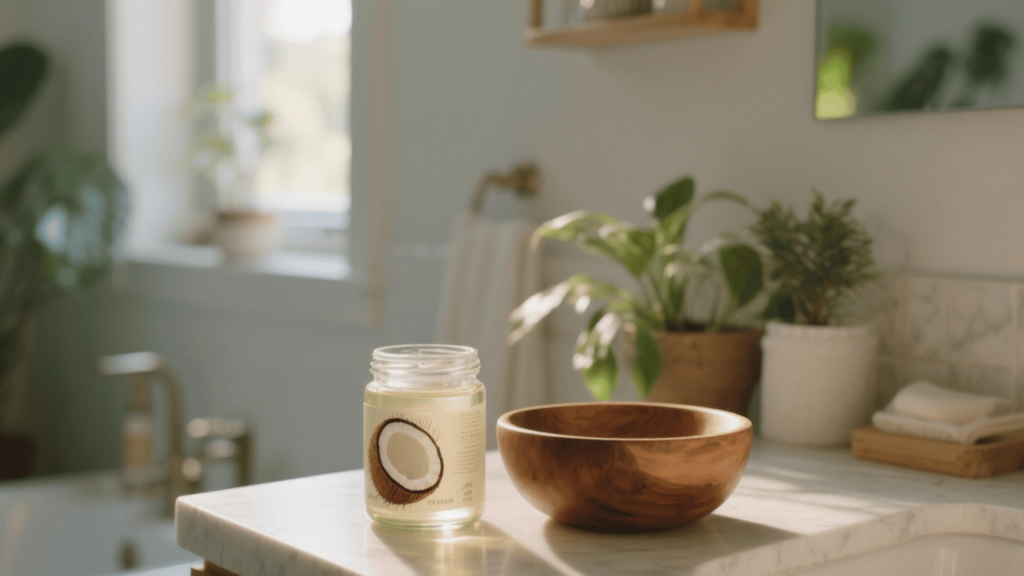
Warm 1-2 tablespoons of virgin coconut oil until liquid but not hot. Part hair into sections and apply oil directly to scalp using fingertips.
Massage gently in circular motions for 5-10 minutes to improve circulation. Leave the oil on for 30 minutes to 2 hours before washing out with gentle shampoo.
- How It Works: Coconut oil contains lauric acid which has natural antimicrobial properties against acne bacteria
- Application Method: Massage warm oil into scalp and leave for 30 minutes to 2 hours
- Benefits: Provides antimicrobial action, moisturizes scalp, and improves blood circulation
- How Often: Apply 1-2 times per week, avoiding overuse that might clog pores
11. Neem Oil Treatment
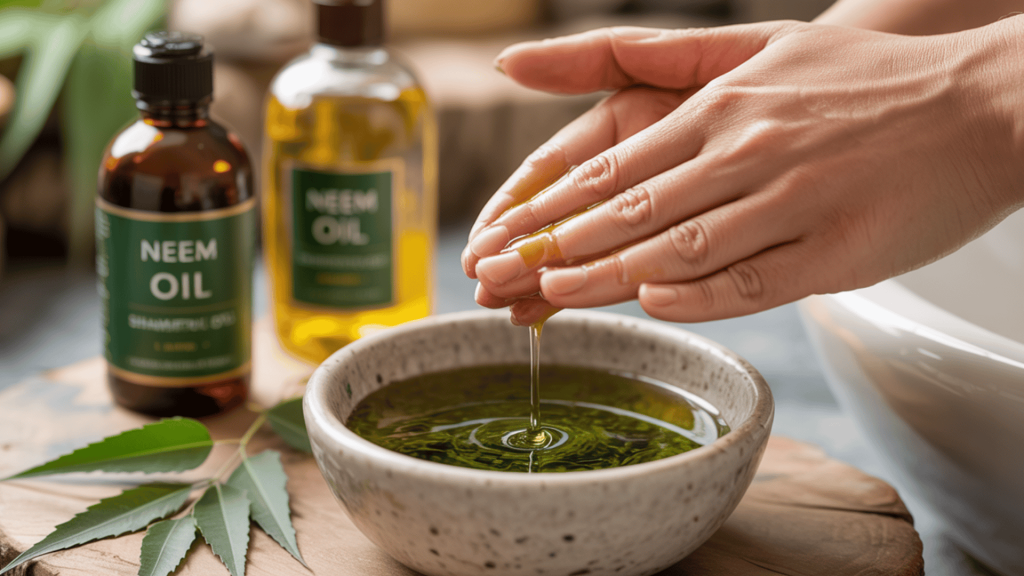
Mix 5-10 drops of neem oil with 2 tablespoons of carrier oil like olive or coconut oil. Apply the mixture to affected scalp areas using fingertips or cotton pads.
Massage gently and leave on for 20-30 minutes for maximum effectiveness. Wash out thoroughly with shampoo, as neem oil has a strong natural scent.
- How It Works: Neem oil contains compounds that fight bacteria and fungi and reduce inflammation naturally
- Application Method: Mix with carrier oil and apply to affected areas for 20-30 minutes
- Benefits: Fights multiple types of scalp infections, reduces inflammation, and promotes healing
- How Often: Use 1-2 times per week due to its potent nature and strong scent
These natural options offer gentler alternatives to harsh chemicals while still providing therapeutic benefits. Consistency and patience are key to seeing results with home remedies.
Medical Treatment Options
Professional treatments become necessary when home remedies aren’t sufficient or when dealing with severe cases. Medical options offer stronger, faster-acting solutions for persistent health issues.
- Topical antibiotics like clindamycin target specific bacteria causing inflammation and provide rapid symptom relief
- Oral antibiotics such as doxycycline or minocycline work internally to reduce bacterial overgrowth throughout the scalp
- Retinoids reduce oil production and promote healthy skin cell turnover for long-term breakout prevention
- Antifungal treatments address yeast-related scalp issues when bacterial treatments aren’t effective
- Corticosteroid injections can quickly reduce inflammation in severe, cystic scalp pimples.
Medical treatments require professional supervision to ensure safety and effectiveness. Regular follow-ups help adjust treatment plans as conditions improve or change.
Preventing Scalp Pimples
Prevention strategies focus on maintaining a clean, healthy scalp environment that doesn’t encourage pimple formation. Simple daily habits make a significant difference in long-term scalp health.
- Use gentle, sulfate-free shampoos, and wash hair every 2-3 days or after heavy sweating
- Choose non-comedogenic hair products and avoid heavy oils or thick creams near the scalp
- Apply conditioner only to the hair lengths, keeping it away from the root area
- Rinse hair thoroughly with lukewarm water to remove all product residue completely
- Change pillowcases weekly and wash hats or helmets regularly to prevent bacterial transfer
- Maintain a balanced diet low in high-glycemic foods and dairy products
- Manage stress through exercise, meditation, or adequate sleep to regulate hormones
- Avoid touching or picking at the scalp to prevent further irritation and infection
Good prevention habits reduce the likelihood of future breakouts significantly. Consistent care proves more effective than intensive treatments.
What to Expect During Treatment?
Treatment timelines vary based on severity and chosen methods, but patience and consistency lead to the best results. Understanding what to expect helps maintain realistic expectations throughout the healing process.
Most people see improvement in 4-6 weeks of consistent treatment. Mild cases may clear sooner, while severe breakouts can take 2-3 months for progress.
Side effects include temporary dryness, redness, or sensitivity, which usually subside as the scalp adjusts. Gradually introduce new products to minimize irritation.
Occasional flare-ups may occur due to hormonal changes, stress, or product reactions. Maintaining your established routine and avoiding known triggers helps minimize recurrence and keeps the scalp healthy long-term.
Setting realistic expectations prevents disappointment and helps maintain consistent treatment habits. Most treatment failures happen because people give up too early in the process.
Conclusion
Scalp pimples don’t have to control your comfort or confidence anymore. The strategies outlined here, from natural tea tree oil treatments to professional medical interventions, provide a clear roadmap for achieving a healthier scalp.
So what makes the difference? Consistency trumps intensity every time.
Consistent care is more effective than sporadic efforts. Start with one approach, monitor progress, and consult a professional if symptoms persist.
Your scalp health venture begins with that first intentional choice, make it today for clearer, more comfortable tomorrows.

